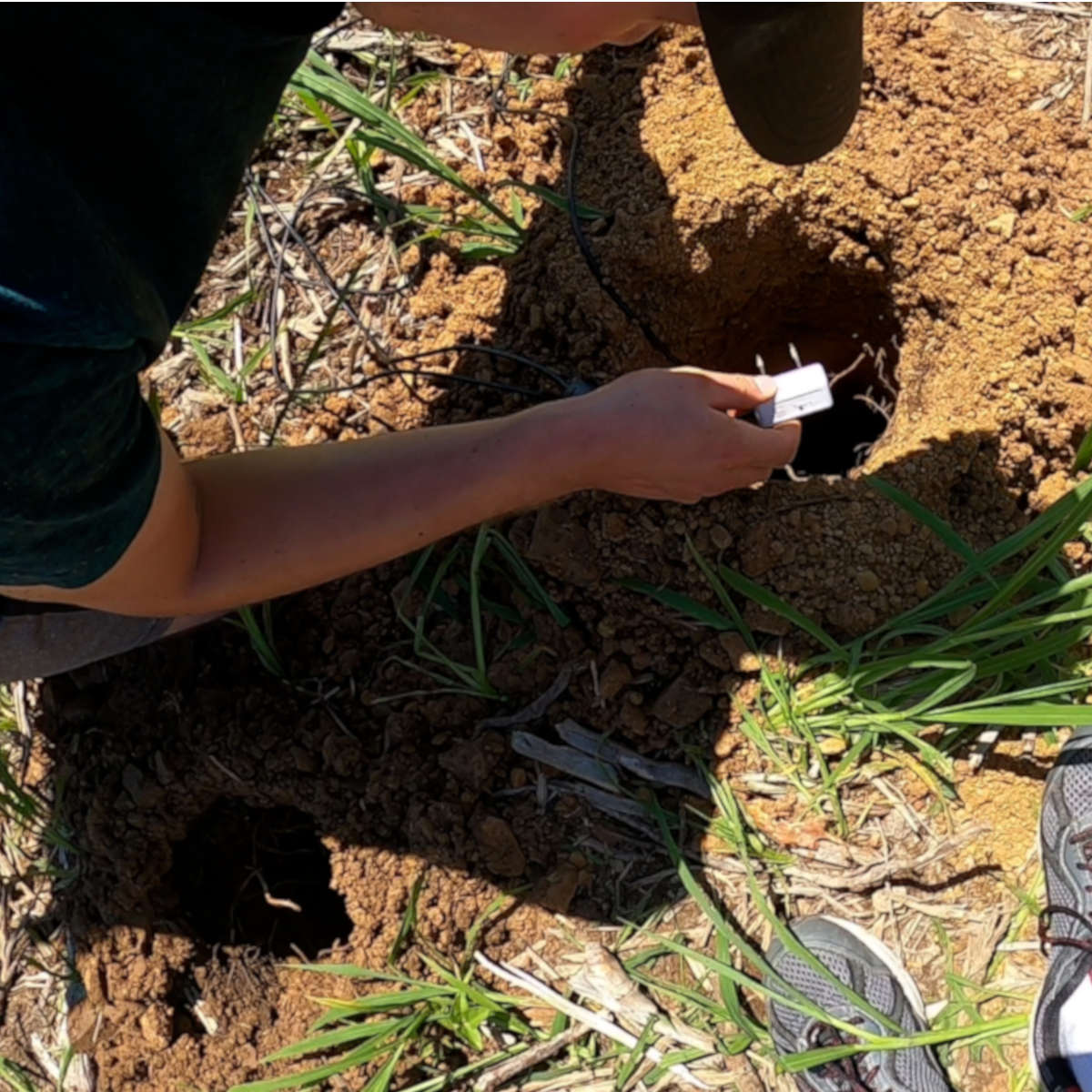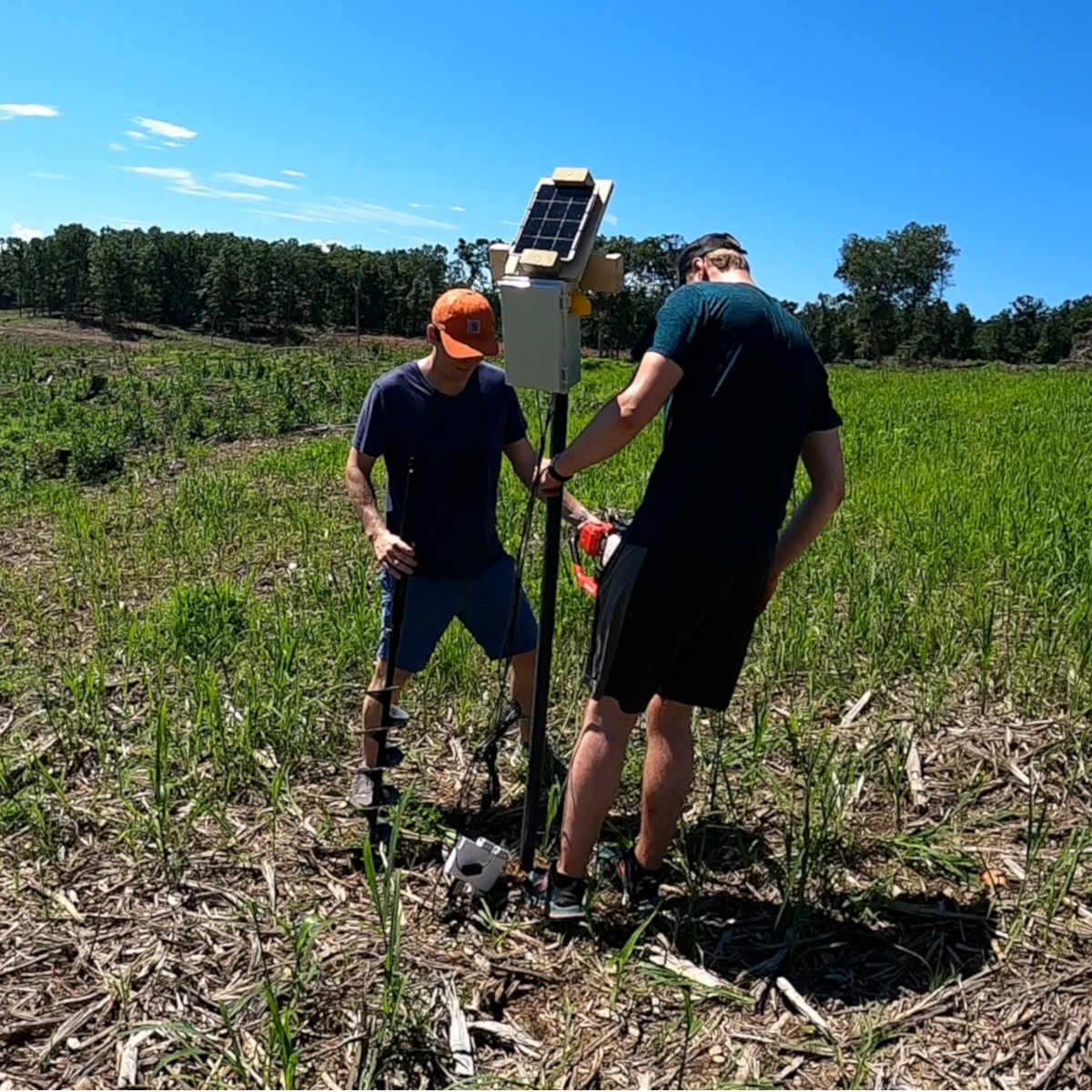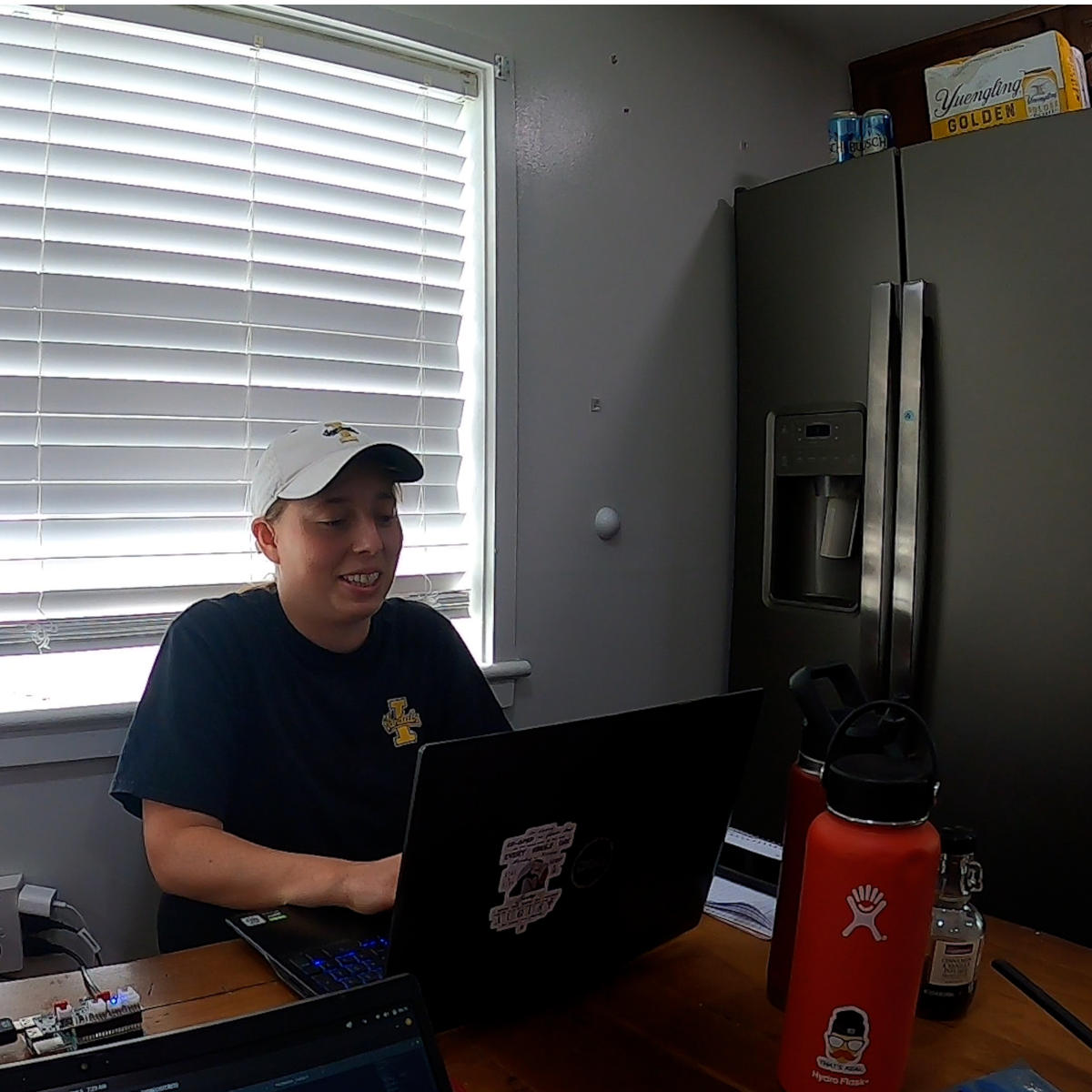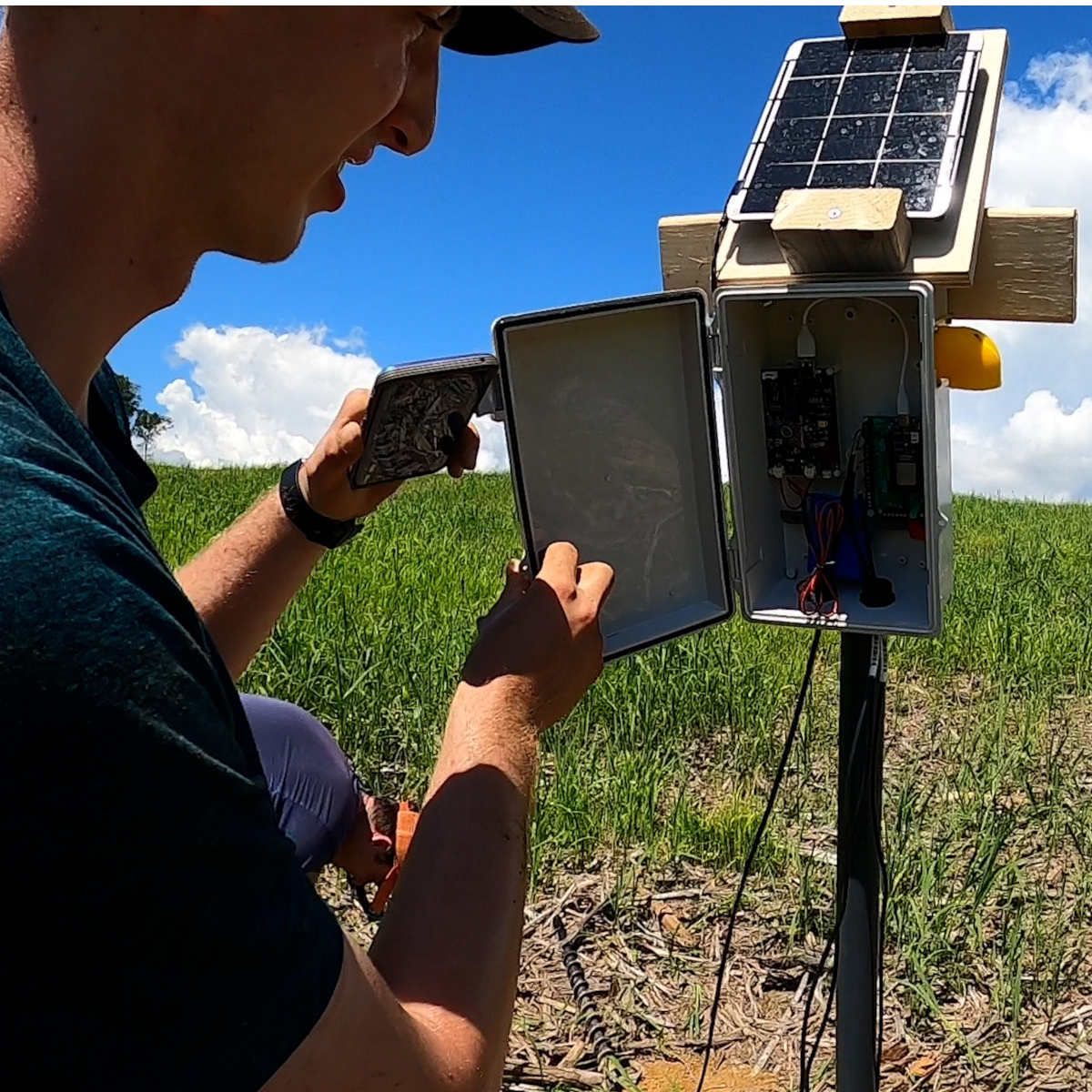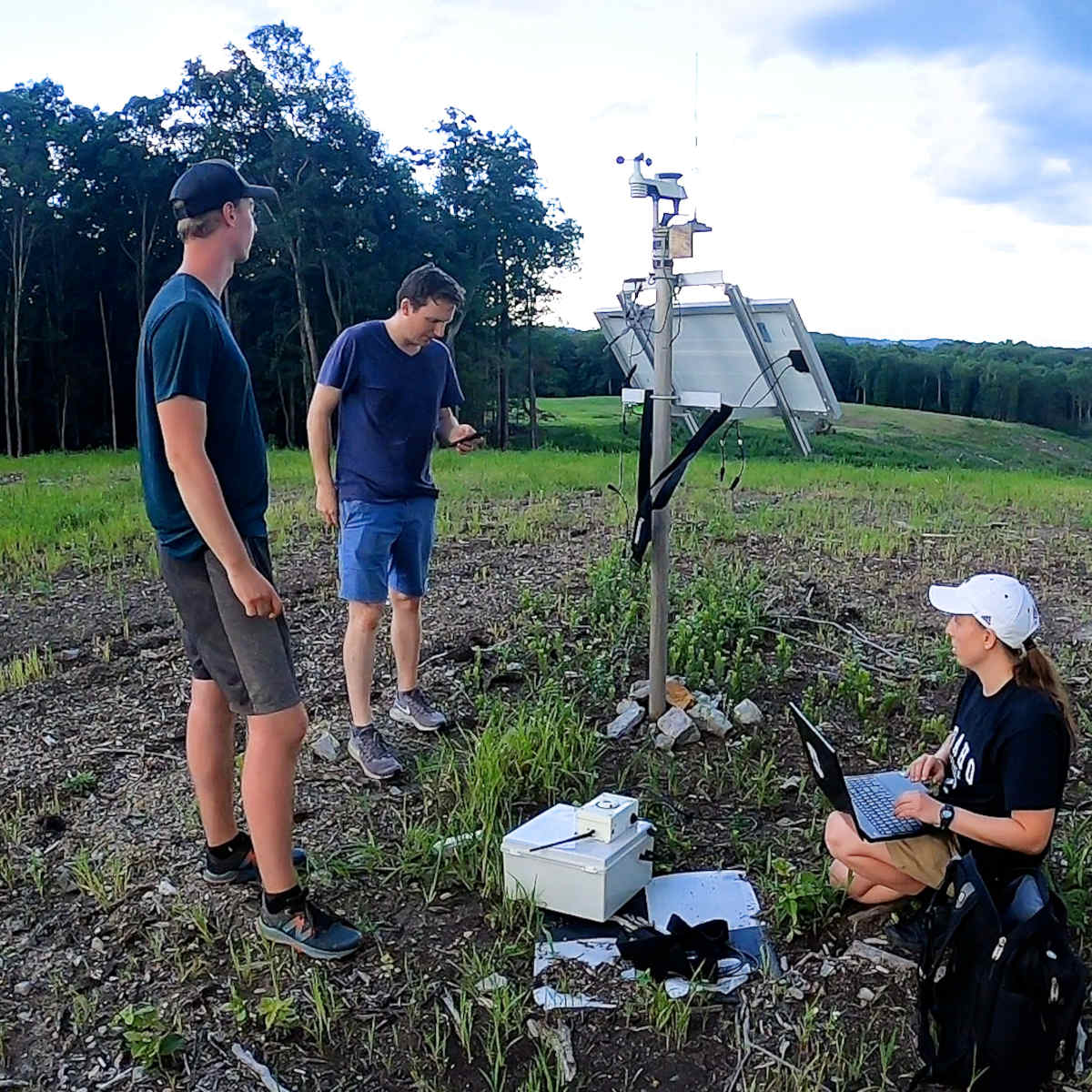Super Smart Vineyards
Students Develop Components to Help Vintners Increase Efficiency and Sustainability
On a Virginia hillside overlooking forests of sweet gum, sassafras and sycamore, a group of University of Idaho students from Coeur d'Alene marveled at the August humidity.
It measured a sticky 80-plus percent, not something the Inland Empire students were accustomed to.
"When the humidity is high in North Idaho, it's around 40%," Nikoloi Tiong, a computer science graduate said. "Anything higher gets pretty sweltering."
Tiong and Mary Everett, who is earning her doctorate in computer science from U of I, and Garrett Wells, a master's robotics student, stood on a rolling expanse of former forest, harvested to make way for a vineyard.
The trio had been enlisted by the owners of Laurel Grove Wine Farm to build and install components for an automated winery. The work would use artificial intelligence and big data to monitor the grape growing process. In addition, humidity, temperature, soil moisture and acidity information, as well as daily images of grapes and vines would be gathered and stored in a mega computer. The data would be made accessible to the vintners, no matter where in the world they resided.
Bringing components with them, the students flew from Spokane to the East Coast and spent two days in the northwest corner of the Old Dominion state setting up weather stations on the rolling 120 acres. They troubleshot the instruments and made certain the data gathered by the stations were being transferred, saved and accessible to the vintners. The Coeur d'Alene-based U of I students battled with the elements including sticky heat and a pounding rain storm.
"I didn't bring sunscreen so I got a real good burn," said Well, who trudged the rolling land with a DPS establishing points where the stations and their sensors would be erected. Wells, of Boise, earned a bachelor's at the College of Engineering in Moscow before transferring to the robotics center in Coeur d'Alene for his master's.
Tiong's work — he is simultaneously working on a master's and a doctorate — included setting up cameras and making sure the computer program he developed would transfer images from the Virginia site to the vintner's database.
Everett, a former U of I marketing major from Lewiston turned computer whiz, is writing her dissertation on automation in agriculture using artificial intelligence. She is responsible for building the system that ties the data gathering components together into an easily attainable format.
The owners joked that their entire operation depended on the student's work, Everett said with a smile. "No pressure, I guess."
U of Idaho Students Build Components for Automated Winery
Three computer science students built and installed artificial intelligence for a Virginia vineyard.
"We’re providing the artificial intelligence to give the wine growers actionable information." John Shovic, professor and research faculty
The University of Idaho computer science robotics lab in Coeur d'Alene, part of the College of Engineering, is a hands-on environment where students develop the software brains, or algorithms, of artificial intelligence. Inside the lab housed in the Hedlund Building on the campus of North Idaho College a dozen robots occupy space with the students who use, improve and maintain the machines.
Professor and research faculty John Shovic said once it's up and running, the vineyard project will allow for the use of an intelligent communication network to help Laurel Grove Wine Farms reduce power consumption and defray operating costs.
"We're providing the artificial intelligence to give the wine growers actionable information, microclimate and environmental information, to run their winery," Shovic said. "We're not sure what kind of data they need to make decisions, so we're gathering a lot of it."
Minimizing the energy input normally required to maintain a vineyard, results in a more sustainable, less impactful growing environment, Shovic said.
"It will allow them to do a better job making wine," he said.
Once the bugs are out of the system, the students hope to install similar systems in wineries in Idaho and Washington. They are already in contact with some Lewiston vintners.
"We're basically trying to figure out how vintners can do a better job growing, with less energy input and more efficiency," Everett said.
John Shovic
Research Faculty; Director of the Center for Intelligent Industrial Robotics
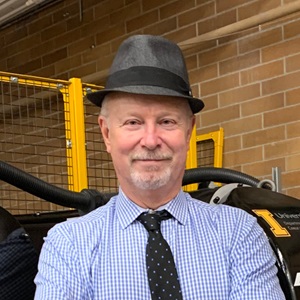
Hedlund Building 204A
Article by Ralph Bartholdt, University Communications and Marketing.
Photos by Nikolai Tiong.
Video Editing by Garrett Britton, University Visual Productions.
Published in January 2023.







